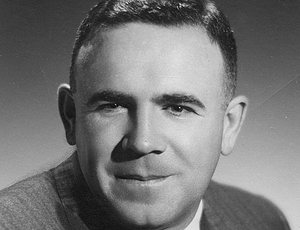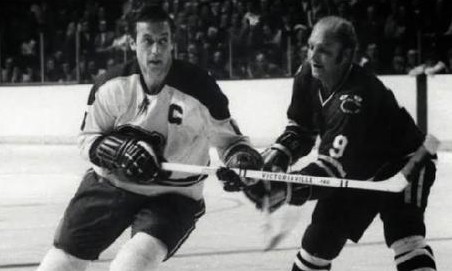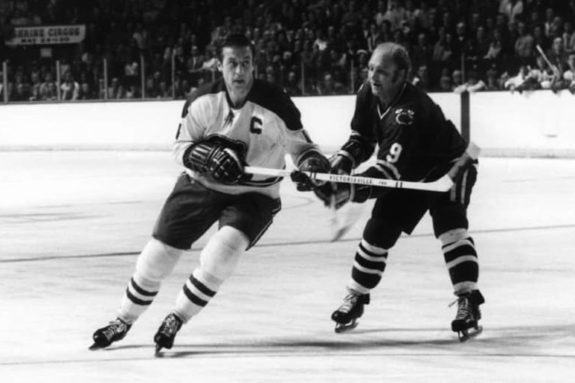Watching the Stanley Cup Final, you realize this season has not been without controversy. The Vegas Golden Knights are the coolest thing to hit the desert since casinos, but many fans of other teams resent their success and blame it on the format of the recent expansion draft. Much of their anger centres around the Knights not paying their dues in division basements for years like many of their predecessors in the 12 NHL expansions since the end of the six-team era in 1967. Fans of hockey history realize this was not the first time expansion created problems, at least for one iconic Canadian team.

When the NHL expanded from six to 12 teams in 1967-68, the new franchises were placed in the same division. While the new alignment allowed for some inter-divisional play, it prevented the older teams from dominating and allowed the new franchises to be eligible for the playoff rounds, a key element in establishing loyal fanbases and success in new markets. For the Montreal Canadiens, the first two years of the new arrangement did not derail their continued success, as they won Stanley Cups in 1967-68 and 1968-69. With four Cups in five years, they looked like the dominant Habs of the 1950s.
1969-70: The Great Playoff Swindle
The Canadiens entered their final season of the 1960s with optimism. The Montreal Forum might have had a recent facelift, the but team had most of the same regulars from previous winning squads and were still lead by captain Jean Beliveau, speedy winger Yvan Cournoyer, and veteran Henri Richard.

Entering mid-February, the Habs hadn’t lost more than two consecutive games and were sitting third in the East Divison, three points behind the New York Rangers. There was some concern as they had lost points due to third-period lapses nine times during the season and were falling into the habit of protecting their leads late in the game rather than attacking offensively. Things quickly went south as they lost seven of their next 10 games and fell to fifth place in their division.
On March 11, the Canadiens broke their most recent losing streak, but it came at a price. Serge Savard, winner of the Conn Smythe trophy in their previous Cup run, broke his leg in several places, ending his season and costing the team its best penalty killer and a mobile defenseman who fit the mould of the new type of puck mover popularized by the Bruins’ Bobby Orr. The team struggled with injuries all season, losing Beliveau, Richard, enforcer John Ferguson, and Jacques Lemaire for key stretches during the year.
A Tense Final Weekend of the Regular Season
Despite the Habs’ struggles, nothing compared to the collapse of the New York Rangers, who went from division leaders in March to fighting for their playoff lives a month later. Like the Habs, their downfall was partially due to an injury to a star defenseman. Brad Park, another blueliner with the aggressive style of Orr, broke his ankle and forced the Rangers into scrambling to replace him.

On April 5, 1970, the Canadiens entered their final game of the regular season two points up on the Rangers. Their opponents, the Detroit Red Wings, had just clinched a playoff spot the night before and were obviously jubilant. They had last made the playoffs in 1966 and had since faltered, despite the exploits of aging superstars Gordie Howe and Alex Delvecchio.
The only way the Rangers could make the playoffs would be to beat the Red Wings while the Canadiens would have to lose to the Chicago Blackhawks. There was an added wrinkle that made this nearly impossible. A Rangers victory and Habs loss would leave the teams with identical records, but the Canadiens would grab the final playoff spot having scored more goals during the season. Entering the final game, the Canadiens had scored 242 to the Rangers’ 237.
Habs Dealt the Worst Possible Hand
By all accounts, the Detroit players’ celebration was a festive one. Arriving in New York at 3:00 a.m., they had to be ready for an afternoon game 11 hours later. To make matters worse, the Rangers’ backup goalie was injured and Roger Crozier had to start in net for the second time in 18 hours. By the time the Canadiens hit the ice that evening, the Rangers had scored nine goals, beating the exhausted Red Wings, 9-5. The victory forced the Canadiens to beat their opponents, the Chicago Blackhawks, and score at least five goals in order to qualify for the playoffs.

As he would continue to do for more than a decade, goalie Tony Esposito—one of the architects of the butterfly style—was not to be beaten that night. Losing 5-2, the Canadiens pulled goaltender Rogie Vachon with nine minutes left to add an extra attacker, desperate to score another three goals. They failed and lost 10-2, giving up five empty-net goals in the process. Some of the Canadiens’ players accused the Red Wings of throwing the game, but in reality, they were likely just worn out by the excesses of the night before and couldn’t get motivated for a game that was meaningless to them.
At the end of the evening, and for the only time in the NHL’s 53-year history, no Canadian team qualified for the playoffs. To add insult to injury, the St. Louis Blues, winners of the West Divison for the third straight year, finished with 86 points, six fewer than the Canadiens. The other three expansion teams that qualified in the West didn’t even post winning records, with the Oakland Seals finishing with just 22 wins in 76 games.
2015-16: Memories of That Season Resurface
The sting of the 1969-70 season would soon vanish when the Montreal Canadiens stunned the hockey world by winning the Stanley Cup the following year. In the first round of the playoffs, they beat a heavily favoured Boston Bruins team that had shattered offensive records and finished 24 points ahead of the Canadiens. In an epic end to his career, 40-year-old Jean Beliveau put the team on his shoulders and dominated during the round. They would go on to defeat the Chicago Blackhawks in the Final.

A resurgent Habs won six Stanley Cups in the 1970s, their final decade as a dominant NHL team. The league continued to expand and divisions were restructured, along with the tie-breaking format to qualify for the playoffs. The Edmonton Oilers soon flourished as the best team in the league, and there was a consistent Canadian presence in the playoffs until the unimaginable happened in 2015-16 when again, no Canadian teams were represented in the postseason. It was a painful reminder of that time 46 years earlier when the architects of expansion temporarily witnessed their new structure crumbling.